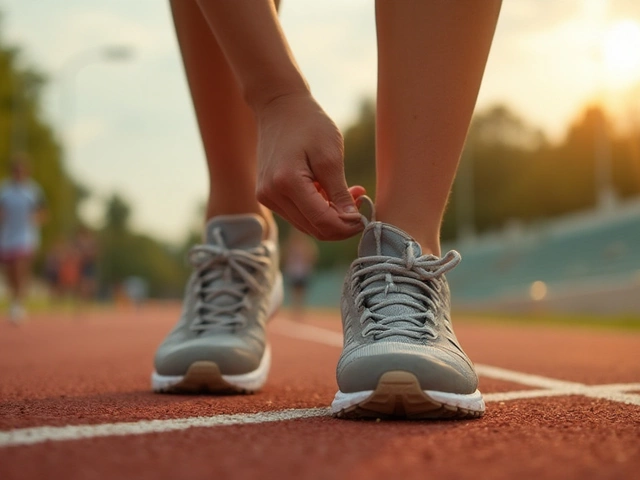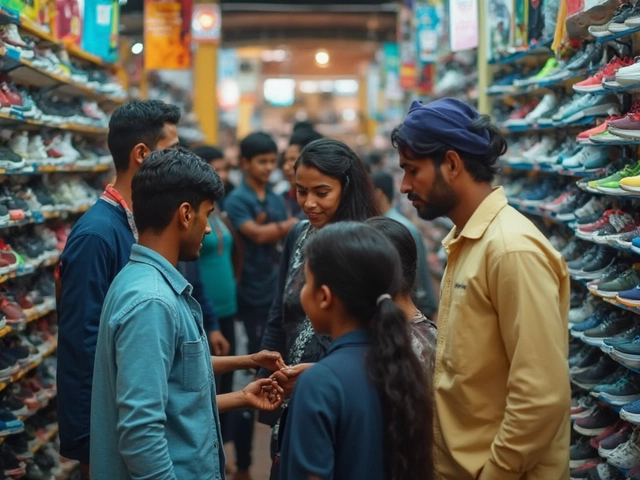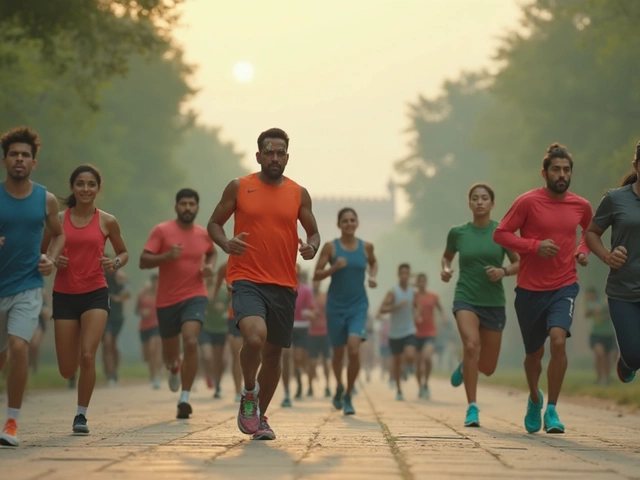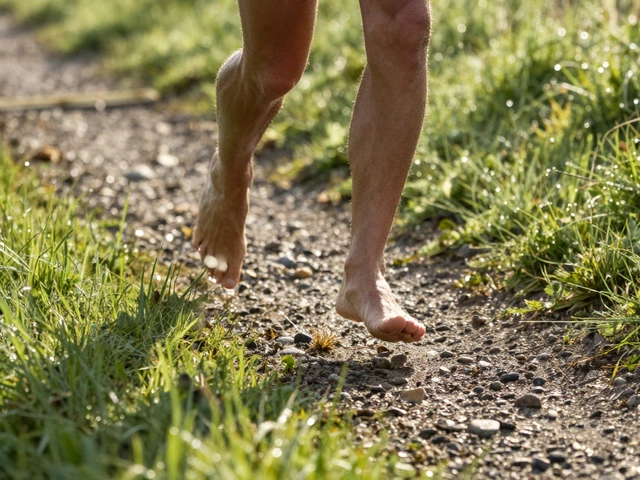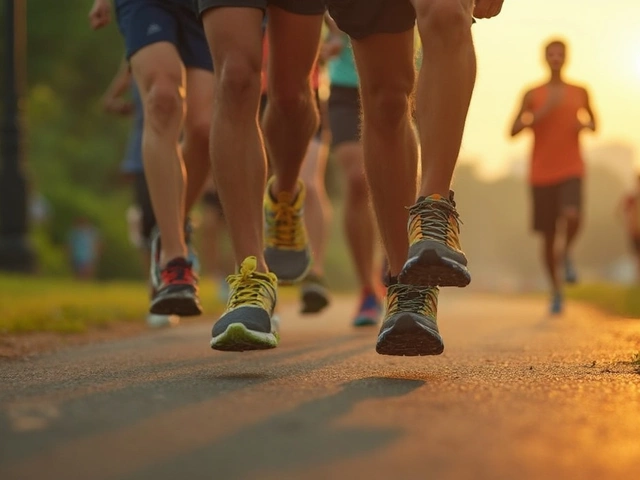Turns out, the search for the perfect pair of running shoes can send even the calmest beginner into a mini-meltdown. Walk into any sports shop and get ready—walls stacked with neon foam, mesh, and wild slogans promising better runs, more support, and magical comfort. But do running shoes really matter when you’re just starting out or could you lace up any old trainers and jog around the block?
What Happens Inside Your Shoes: Facts You Shouldn’t Ignore
Every time your foot hits the ground, the force sent up your legs is two to three times your body weight. That’s a real stat from the American Academy of Podiatric Sports Medicine. With each step, all those pounds of pressure ripple up through your bones, joints, and soft tissue. Maybe your knees click, maybe your shins sting, or maybe you just want to keep up with your neighbor who, frankly, runs suspiciously fast past your house each morning. The type of shoe on your feet matters—not just for speed, but for your future.
Running in casual sneakers or worn-out gym shoes can put new runners at risk for classic beginner injuries. Think of shin splints (that annoying soreness along the front of your legs), stress fractures, blisters, and tendonitis. A study by the British Journal of Sports Medicine in 2023 even showed that beginners wearing non-running specific shoes had more than twice the risk of lower leg pain during their first 3 months.
Why all the drama? Running shoes do specific jobs: they absorb shock, cushion hard landings, and guide your step to roll properly. Even cheap entry-level running shoes usually have extra padding in the heel and forefoot. If you use old cross-trainers, basketball shoes, or crusty sneakers from the back of your closet, you're likely missing out on that cushioning or might bend your foot in ways that mess with your own natural stride. It sounds weird, but your feet actually sense what’s under them. That’s called proprioception, and confusing it can lead to sore arches or tripped-up knees way too soon.
The good news: You don’t have to invest in the trendiest, flashiest model. For beginners, the magic is more about good fit than brand or tech. Try shoes at the end of the day (your feet swell after lots of walking), and wiggle your toes—there should be a thumb’s width between your longest toe and the tip of the shoe. That trick can help avoid black toenails (no, thank you), and keep you feeling fresh run after run.
Check out how the right support makes an impact in this table:
| Feature | Running Shoes | Generic Sneakers |
|---|---|---|
| Cushioning | Designed for impact protection at heel and forefoot | Minimal, meant for basic walking |
| Arch Support | Contours matched to running gait | One-shape-fits-all, rarely supports arches |
| Sole Grip | Optimized for pavement/trail traction | Basic, can slip on wet surfaces |
| Durability | Most last 300-500 miles of running | Break down faster with impact |
These differences may sound technical, but you'll feel them once you actually start putting in those regular miles.
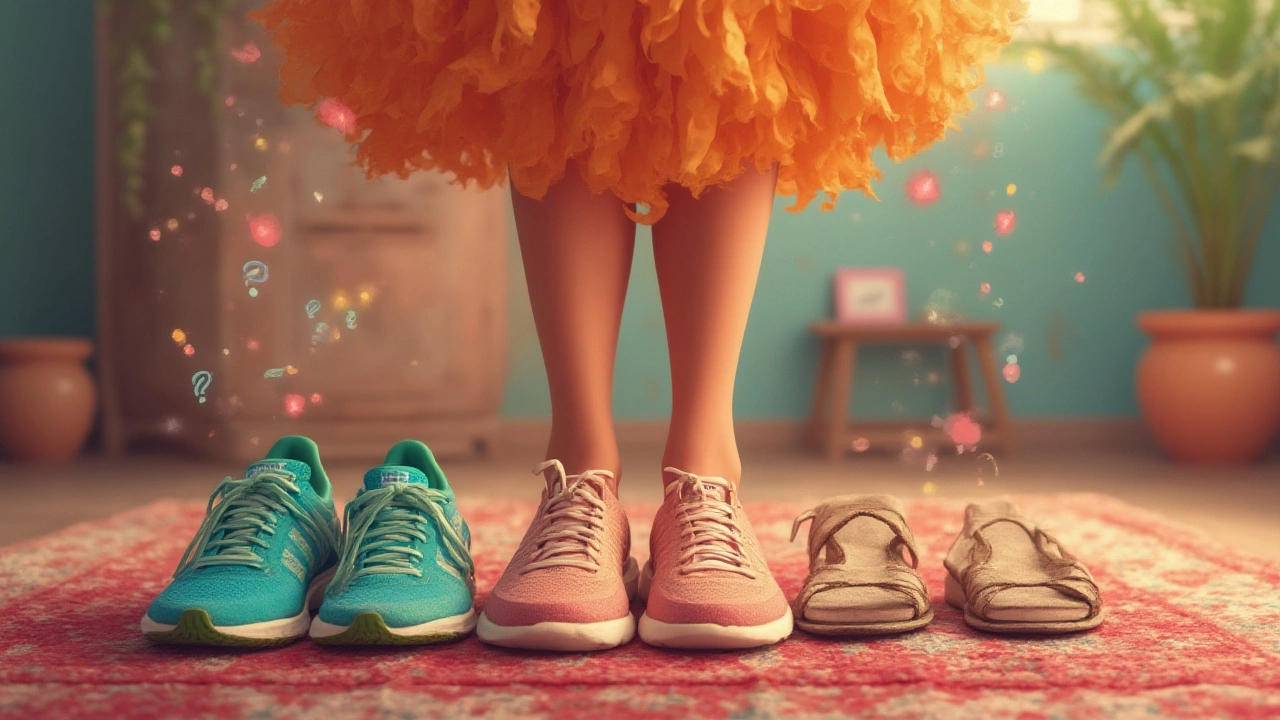
Common Myths That Trip Up New Runners
Plenty of people (some even at the school pick-up) will tell you that “any shoe will do if you’re running slow” or that “foot pain means you’re working hard.” I get it—my kids, Anaya and Ishaan, have heard me talk about shoes more than they'd like, so I had to fact-check my own biases. Truth is, lots of sneaker myths make running harder for beginners than it needs to be.
- “You don’t need running shoes until you’re serious.” Actually, beginners are more likely than advanced runners to get injured. Your joints and tendons aren’t used to repeated impact yet. Extra support is like a padded landing for your rookie phase.
- “Barefoot running toughens your feet faster.” Not true for most city or suburban runners. Paved surfaces and sidewalks chew up unprotected feet. Protective, cushioned shoes are safer for most newbies.
- “It’s just marketing—brands want your money.” Sure, there’s lots of branding hype, but regular running shoes cost the same as a decent basketball sneaker. The price tag isn’t always higher, it’s about matching your needs.
- “Pronator or supinator? You don’t need to know.” Actually, the way your foot rolls inward (pronates) or outward (supinates) affects shoe choice. This isn’t vanity—it can reduce pain and help you avoid future injuries even before you hit your first runner’s high. Plus, most specialty shops will check your stride for free, with a quick treadmill or walking test.
Sure, your first few runs might feel awkward no matter what’s on your feet. But chase away myths, and focus on comfort, support, and safety. Slipping orthotics inside regular shoes sometimes works for walkers, but new runners get better results when the shoe itself does most of the heavy lifting. In fact, a study from the University of Calgary tracked new runners for 10 weeks: those who wore designated running shoes reported less foot fatigue and finished 25% more runs pain-free versus “just any sneakers.” That’s a massive win if you want to build momentum and stick with your plan.
Ever wonder if all that tech really matters? Carbon plates, fancy foams, energy return—that’s more for racing and pros. For someone jogging two or three times a week, just making sure your feet feel fine after a 20-minute run matters the most. And yes, you can find decent basic running shoes for under $75. Don’t let store displays and influencer reviews scare you off: stick with fit and function.
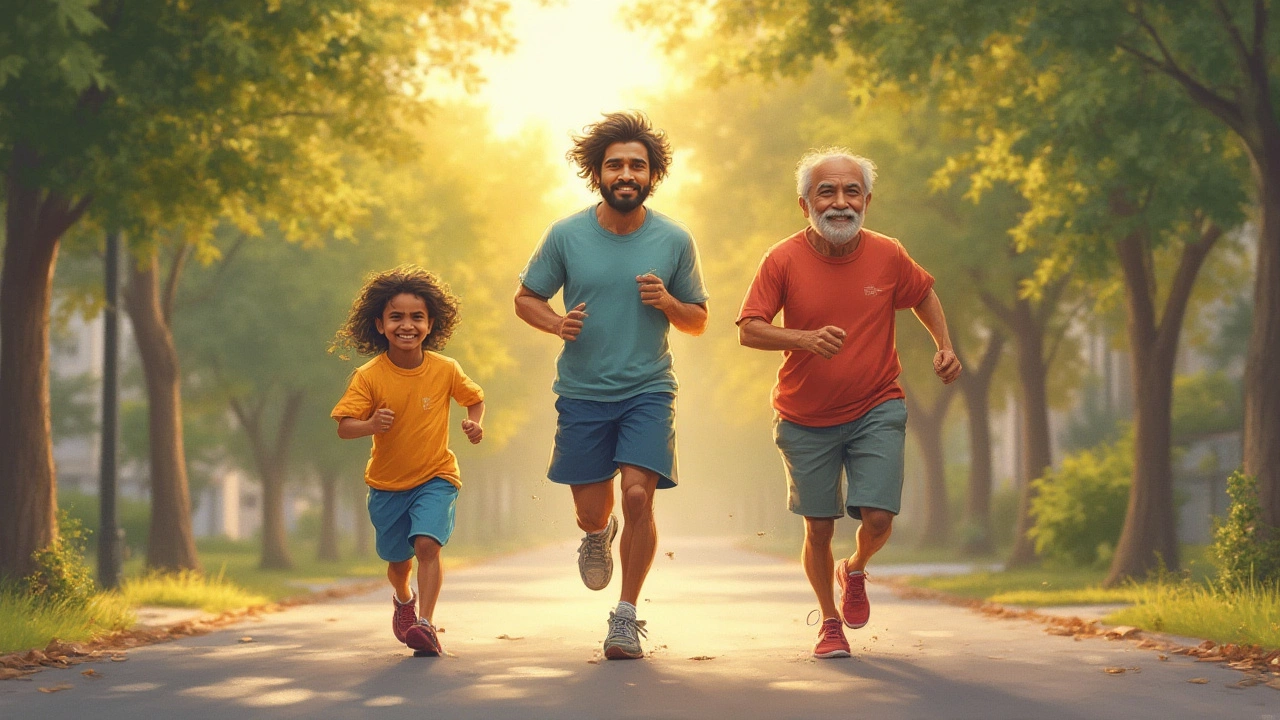
Tips New Runners Wish They Knew Before Lacing Up
The right shoes? That’s your starting line, not the only thing that matters. Here’s the stuff I wish someone had told me before I spent years running in shoes that were two sizes too small (thank you, teen thriftiness).
- Replace your shoes often enough. Most running shoes last 300-500 miles. If you run 3 miles, three times a week, that’s about 8 months before you’ll really feel the wear.
- Bring your old pair when shoe shopping. Staff can look for wear patterns, which show if you roll in/out when you run—and if your old soles are worn smooth, don’t wait for holes to appear before swapping them out.
- Don’t buy for looks alone. That all-black pair might go with every outfit, but if they pinch or rub, you’ll regret it by mile two. Good running shoe stores should let you jog or walk a bit before you buy, and some even offer 30-day returns if they give you blisters.
- Break new shoes in slowly. Don’t try a long run in fresh-out-of-the-box kicks. Wear them for short walks or errands first, to soften up any stiff edges and let your feet adjust.
- Socks matter, too. Cotton socks hold sweat and create friction. Look for synthetic or merino blends—they let your feet breathe and ward off blisters. My friend Kiran didn’t believe me until she tried a $6 pair of running socks, and she hasn’t gone back since.
- Keep a rotation if you can. Alternating two pairs lets each one dry out between runs and can actually extend the life of both by up to 20%.
Parents know the pain of watching kids outgrow shoes every few months. For adults, our feet can still change size based on pregnancy, weight, or even how much running we do! Measure your feet once a year, especially if you notice hot spots or new rubbing.
Do brands matter? Some swear by Nike, others love Asics, Brooks, Saucony or New Balance. Try a few—what fits your friend’s foot might not fit yours. Trust the fit, not just the label.
If you’re running on trails, look for shoes with tougher soles and more grip. City pavement? A lighter, smoother bottom does the trick. And if you have wider feet (blame genetics, like my side of the family), lots of brands now offer wide sizes without weird looks.
Lastly, don’t let your ankles do all the work. Basic strength moves at home—like calf raises and toe taps—can boost foot stability. Happy feet fuel happy runs. Remember, the real goal isn’t a footwear fashion show. It’s finishing your first run smiling, ready to try again tomorrow.
The bottom line: the right running shoes won’t make you a marathoner overnight, but they’ll help you stick with running longer, pain-free. You don’t need techy bells and whistles—just the right foundation. So treat your feet kindly, and give yourself the best shot at a running habit that actually lasts. One pair is all you need to start.

